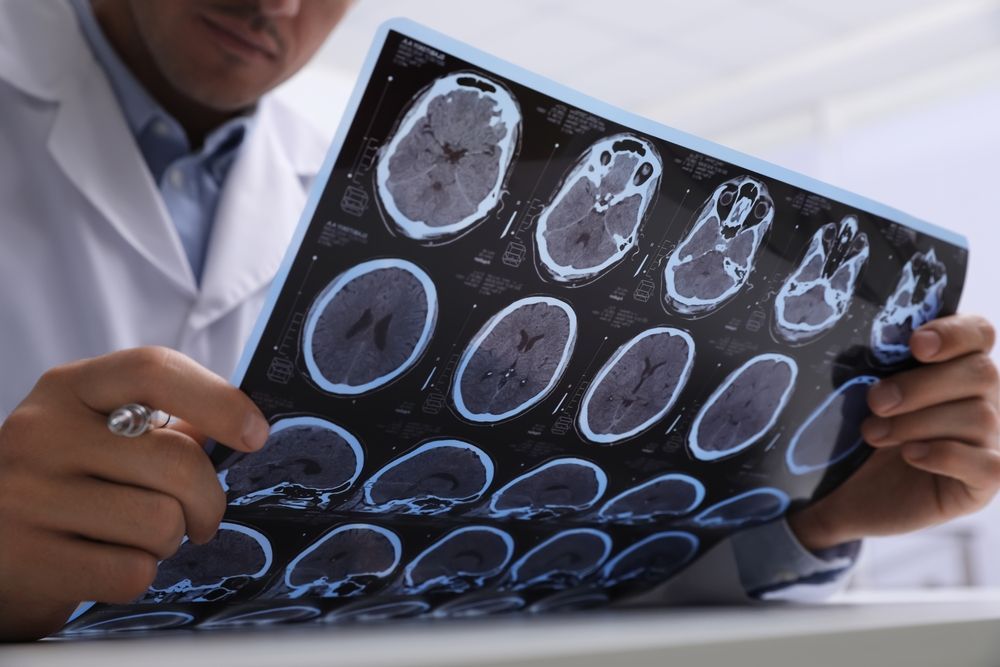By Jessica Nix
•
November 20, 2025
A spinal cord injury (SCI) changes a person’s life. Understanding spinal cord injury types helps you know your rights and options. This article explains the different types of spinal cord injury. It covers traumatic spinal cord injury types, types of paralysis in spinal cord injury, and different types of spinal cord injury by region and severity. If you or a loved one suffer an SCI due to an accident in Atlanta or elsewhere in Georgia, the right legal team matters. The Law Office of Rickard, Drew & Nix stands ready to help with personal injury claims involving SCIs. What is a Spinal Cord Injury? A spinal cord injury happens when damage interrupts signals between your brain and the rest of your body. The injury can arise from trauma (e.g., motor vehicle crashes, falls, sports) or non-traumatic causes (e.g., disease, infection). The effect depends on where the injury occurred and how severe it is. Because spinal cord injury types vary, understanding classification helps in medical care, rehabilitation, and legal claims. How Medical Professionals Classify Spinal Cord Injury Types When discussing types of spinal cord injury , medical professionals use a few key classification systems: location (level), severity (complete vs. incomplete), and mechanism (traumatic vs. non-traumatic). By Severity: Complete vs. Incomplete Complete spinal cord injury – No motor or sensory function remains below the level of the injury. Incomplete spinal cord injury – Some motor or sensory function remains below the injury. These categories form core traumatic spinal cord injury types when the injury comes from an external event like a crash. By Location or Level The spine divides into regions: cervical, thoracic, lumbar, sacral. Each region corresponds to different body functions. Cervical injuries (C1-C8) affect neck region and often all four limbs. Thoracic injuries (T1-T12) impact chest, trunk, and legs. Lumbar injuries (L1-L5) involve lower back, hips, legs. Sacral injuries (S1-S5) affect hips, pelvic organs, some leg control. The location helps define different types of spinal cord injury and their expected functional outcomes. By Mechanism: Traumatic vs. Non-traumatic Traumatic spinal cord injury types refer to damage from external force (car crash, fall, sports, violence). Non-traumatic injuries result from internal causes (disease, infection, tumor). Together, these classification axes illustrate the broad spectrum of types of spinal cord injury . Specific Types of Spinal Cord Injury by Pattern Beyond location and severity, there are specific patterns of injury that define how the injury manifests. These are especially relevant in types of paralysis in spinal cord injury . 1. Anterior Cord Syndrome In this pattern, the front part (anterior) of the spinal cord is damaged. You lose motor control and loss of pain/temperature sensation below the injury. But you may keep light touch and vibration sense. 2. Central Cord Syndrome In this pattern, the center of the spinal cord is injured. It often results in greater weakness in the arms than the legs. Fine motor skills may suffer. 3. Brown-Séquard Syndrome This pattern occurs when one side of the spinal cord is damaged. One side of the body loses movement; the opposite side loses pain/temperature sensation. 4. Posterior Cord Syndrome Rare, but involves damage to the back (posterior) of the spinal cord. Results include loss of proprioception (sense of body position), but strength and pain sensation may be preserved. These patterns highlight how different types of spinal cord injury produce different functional deficits. Types of Paralysis in Spinal Cord Injury Paralysis patterns vary depending on the injury’s location and severity. Here are common types of paralysis seen with SCIs. Tetraplegia (Quadriplegia) Injuries of the cervical spine often produce tetraplegia, also called quadriplegia. This means paralysis of arms, legs, and torso, and possible breathing impairment. Paraplegia Injuries of the thoracic, lumbar or sacral spinal cord often result in paraplegia. Movement and sensation in the legs (and sometimes trunk) are lost; arms remain functional. Triplegia Less common. Paralysis of both legs and one arm. Often due to an incomplete injury. Other Functional Losses Even if full paralysis does not occur, SCIs may impair bladder/bowel control, sexual function, autonomic regulation (blood pressure, temperature). Understanding these types of paralysis in spinal cord injury is critical for prognosis, rehabilitation plans, and legal claims. Traumatic Spinal Cord Injury Types: Causes and Effects When an SCI results from trauma, it may involve fractures, dislocations, stretching, or compression of the spinal cord. The legal implications in Atlanta or Georgia for such injury types are substantial. Causes of Traumatic SCI Common causes include motor vehicle collisions, falls, sports injuries, acts of violence. When someone else’s negligence causes the accident, the victim may have a claim. Effects Based on Level and Severity A high cervical trauma may lead to tetraplegia and respiratory issues. A lower lumbar injury may allow leg movement but affect walking and bowel/bladder. The higher or more severe the injury, the greater the cost of care and need for lifetime support. Legal and Insurance Considerations Victims of traumatic spinal cord injury types often face high medical bills, long-term care needs, loss of earning capacity. Identifying the exact type of injury helps quantify damages and liability. Different Types of Spinal Cord Injury by Region Breaking down by spine region clarifies how damage yields specific functional losses. Cervical Region Injuries Damage at C1-C8 vertebrae. Affects arms, hands, trunk, legs, and often breathing. Persons may require ventilator support if very high (C1-C4). This region holds the most serious risks. Thoracic Region Injuries Damage at T1-T12. Typically affects trunk and legs, may influence balance and posture. Arms typically remain unaffected. Lumbar Region Injuries Damage at L1-L5. Affects hips, legs, feet. Upper body strength usually intact. Mobility may be impacted. Bladder and bowel control may suffer. Sacral Region Injuries Damage at S1-S5. Impacts hips, pelvic organs, some leg/foot function. Walking may still be possible in some cases. Bladder and bowel control often impaired. Thus, when reviewing different types of spinal cord injury , the region defines what functions are lost and what needs arise in care or legal strategy. Why the Type Matters for Recovery and Legal Rights Medical Recovery Type and level of SCI determine rehabilitation strategy, prognosis, and general outcome. Those with incomplete injuries often have better recovery potential than complete injuries. Flint Rehab+1 Legal and Compensation Considerations For claim evaluations, knowing the type of SCI helps estimate future care costs, loss of income, disability. In Atlanta or Georgia where the Law Office of Rickard, Drew & Nix serves, proving the type and severity of the injury strengthens the legal case. Insurance and Liability Insurers evaluate injury type to decide settlement value. Lawyers must document how the injury type arose, how it impacts life, and link liability to the cause (accident, negligence, etc.). How to Work with Your Legal Team After an SCI If you suffer a spinal cord injury from negligence, you should take steps to protect your rights. Seek immediate medical care. Do not delay treatment. Document the incident: photos, witness names, accident report. Ask for a full diagnosis including the exact type of spinal cord injury (complete/incomplete, region, syndrome pattern). Contact a law firm experienced with spinal cord injury cases in Georgia. The Law Office of Rickard, Drew & Nix can review your case. Keep track of all costs: hospital bills, rehab, assistive equipment, modifications to home, lost wages. Understand your legal options: personal injury claim, negligence action, seeking full compensation. Know that the specific type of injury (e.g., incomplete cervical injury with partial arm/leg function) impacts long-term costs and recovery expectations. FAQs Q1: What are the most common types of spinal cord injury? The most common classification splits injuries into complete and incomplete . Complete injuries mean no signal passes below the injury site. Incomplete injuries mean some function remains. Another common categorization is by region: cervical, thoracic, lumbar, sacral. Q2: How do traumatic spinal cord injury types differ from non-traumatic ones? Traumatic injuries result from an external force—such as a crash or fall. Non-traumatic injuries come from internal factors—such as disease, infection, or degeneration. The legal implications often differ: traumatic injuries often involve liability from an accident, whereas non-traumatic may involve medical condition issues. Q3: What are the types of paralysis in spinal cord injury? Paralysis types include: Tetraplegia/Quadriplegia – all four limbs impacted, usually cervical injury. Paraplegia – lower body impacted, usually thoracic/lumbar/sacral injury. Triplegia – both legs and one arm, often incomplete injury. Each type arises from different injury levels and severity. Q4: How does the region of injury affect recovery and daily life? The higher (closer to the brain) the injury, the greater the potential impact. A cervical injury may affect arms, legs, trunk, and even breathing. Lower injuries (lumbar, sacral) may affect legs and control of bladder/bowel but spare arms and upper body. Knowing the region helps plan for rehabilitation, home modification, assistive devices, and legal damages. Q5: Why does knowing the exact type of spinal cord injury matter for a legal claim? Because the type dictates the extent of disability, care needs, loss of income, and life-long costs. In a legal claim, your attorney will need precise medical information including whether the injury is complete or incomplete, what level of the spine is involved, and what functional losses exist. The clearer the medical picture, the stronger your claim for full compensation. Conclusion Understanding spinal cord injury types, including types of spinal cord injury, traumatic spinal cord injury types, types of paralysis in spinal cord injury, and different types of spinal cord injury, is essential for anyone facing an SCI. If you or a loved one have suffered a spinal cord injury in Atlanta or elsewhere in Georgia due to someone else’s negligence, you need expert legal help. At the Law Office of Rickard, Drew & Nix, we specialise in serious injury cases including spinal cord injuries. We will examine your specific injury type, gather the medical evidence, assess your losses, and fight for full compensation. Contact us today for a free consultation.




